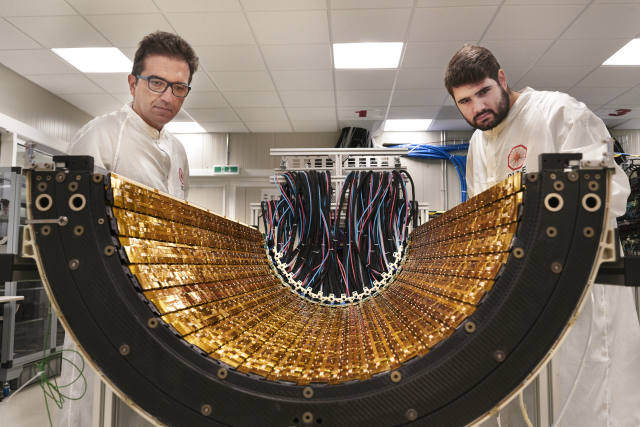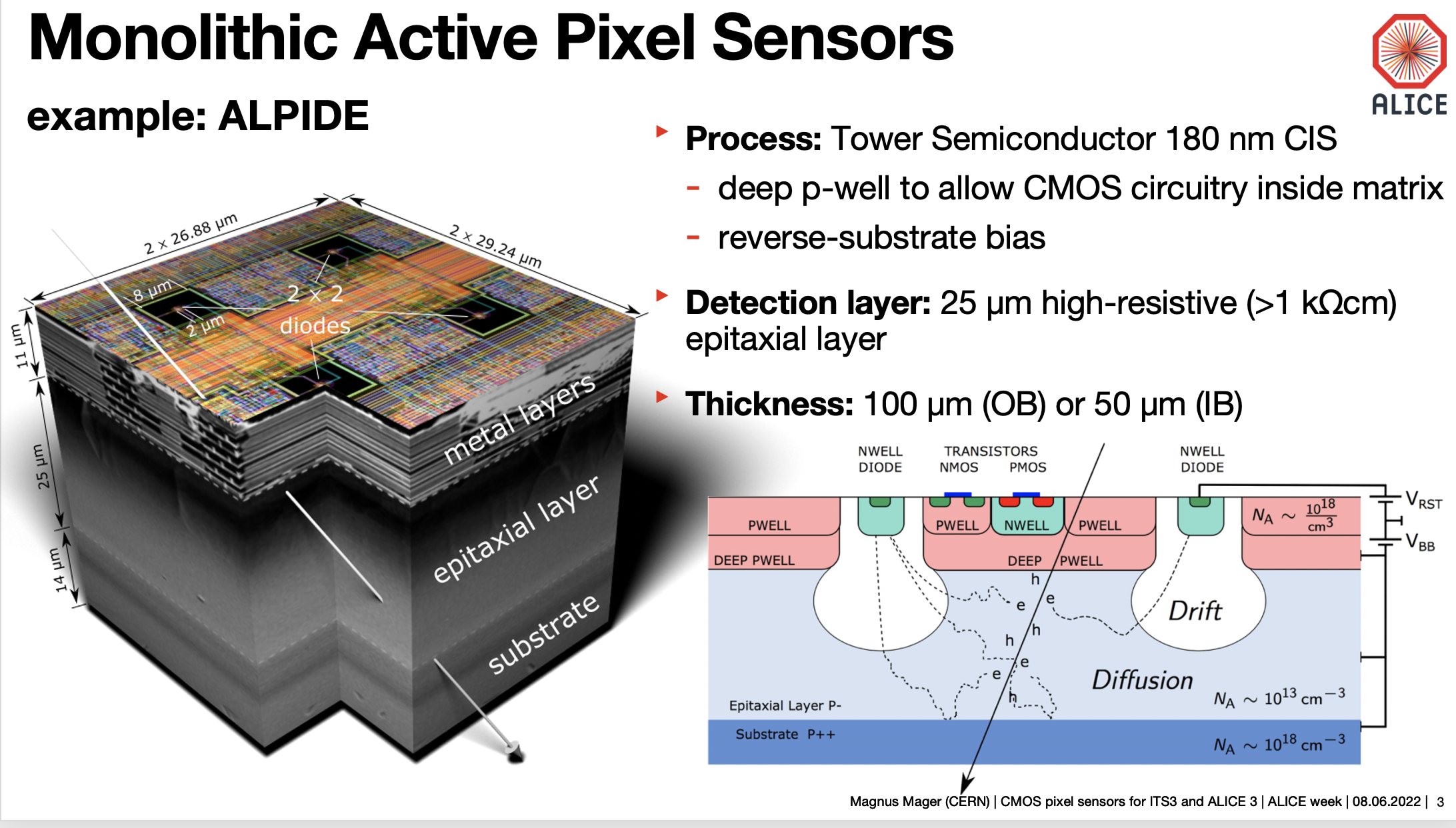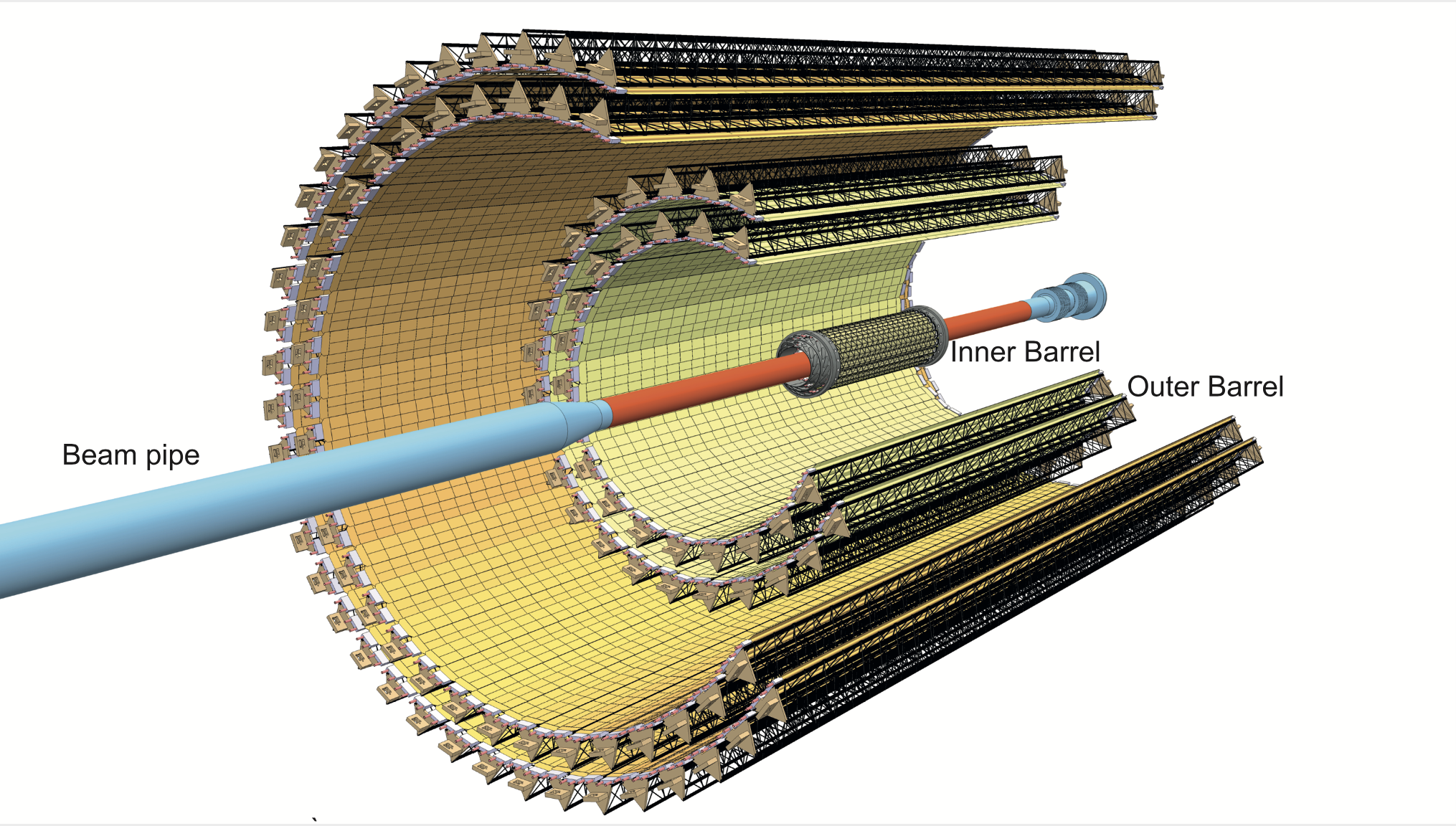Inner Tracking System (ITS 2)

The main tasks of the ITS are to reconstruct the primary and secondary vertices, to track and identify charged particles with a low pt cutoff and to improve the momentum resolution at high pt.
The ITS used until the end of 2018, during LHC Run-1 and Run-2, consisted of two layers of Silicon Pixel Detectors (SPD), two layers of Silicon Drift Detectors (SDD) and two outer layers of Silicon Strip Detectors (SSD). Details are in the link here.
During the second LHC long shutdown (LS2, 2019-2021) a new, ultra-light, high-resolution Inner Tracking System (ITS) was constructed.This is a key element of the ALICE upgrade during LS2. With respect to the one previously installed in ALICE, the new ITS will significantly improve the tracking precision, the tracking efficiency at low-transverse momenta and the readout rate capabilities. The new ITS consists of seven concentric detector layers based on a 50-μm thick CMOS pixel sensor, with a pixel pitch of about 30 x 30 μm2 for a total of about 12.5G pixels covering an active surface of about 10m2. A key feature of the new ITS is the very low mass of the three innermost layers, which have a material thickness of 0.3% X0 per layer.
During the second LHC long shutdown (LS2) a new, ultra-light, high-resolution Inner Tracking System (ITS) was constructed. This is a key element of the ALICE upgrade. With respect to the one previously installed in ALICE, the new ITS will significantly improve the tracking precision, the tracking efficiency at low-transverse momenta and the readout rate capabilities. The new ITS consists of seven concentric detector layers based on a 50-μm thick CMOS pixel sensor, with a pixel pitch of about 30 x 30 μm2 for a total of about 12.5 Giga pixels covering an active surface of about 10 m2. A key feature of the new ITS is the very low mass of the three innermost layers, which have a material thickness of 0.3% X0 per layer.
The requirements for the design of the new ITS were : to improve the impact parameter resolution by a factor of ~3 in r-φ and a factor of ~5 in z. To achieve this the first layer is closer to the interaction point, 21 mm instead of 39 mm.
The beam pipe radius has been reduced from 29 mm to 18.2 mm
The material budget has been reduced from 1.14 %X0 to 0.3 % X0
The pixel size has been reduced (50 μm x 425 μm) -> O(30 μm x 30 μm)



